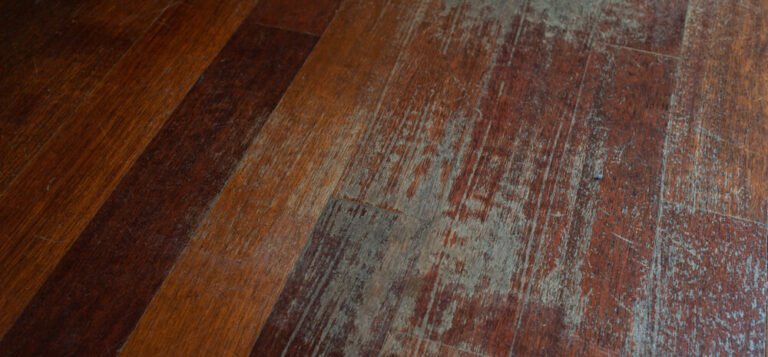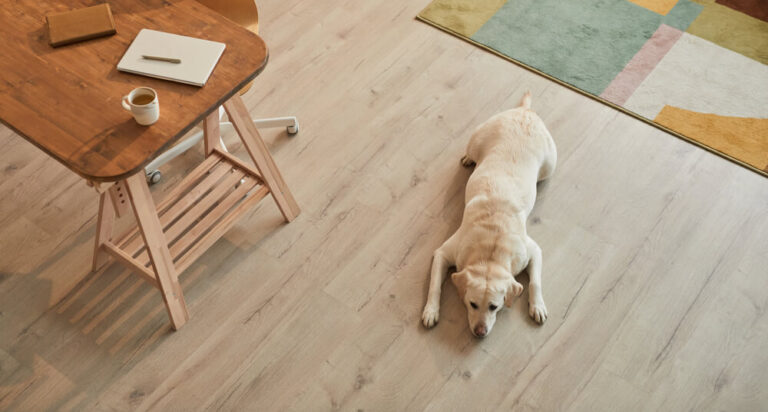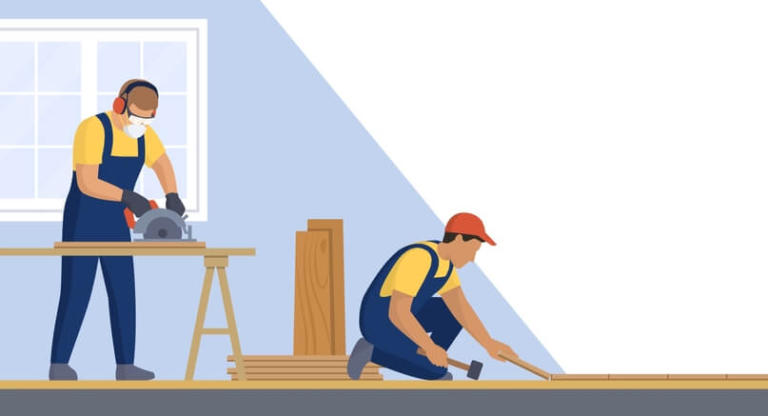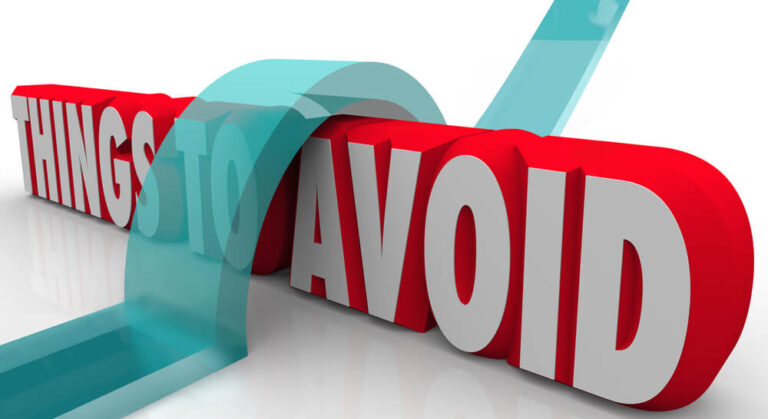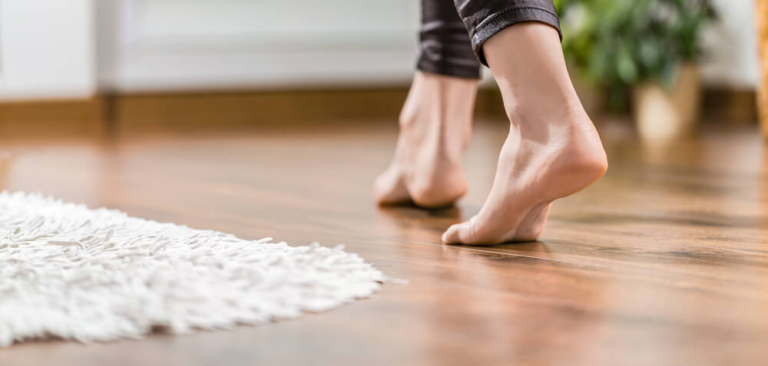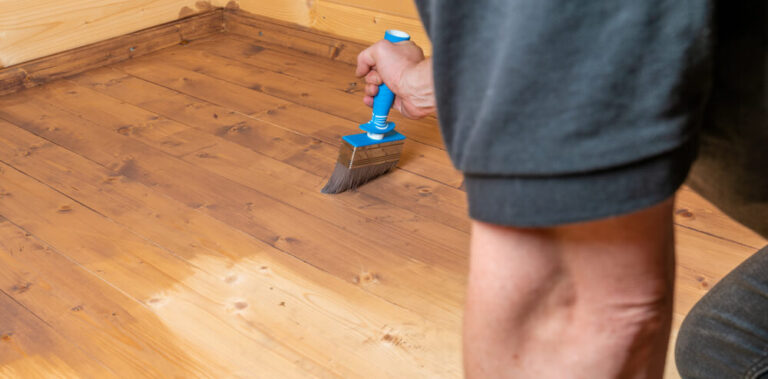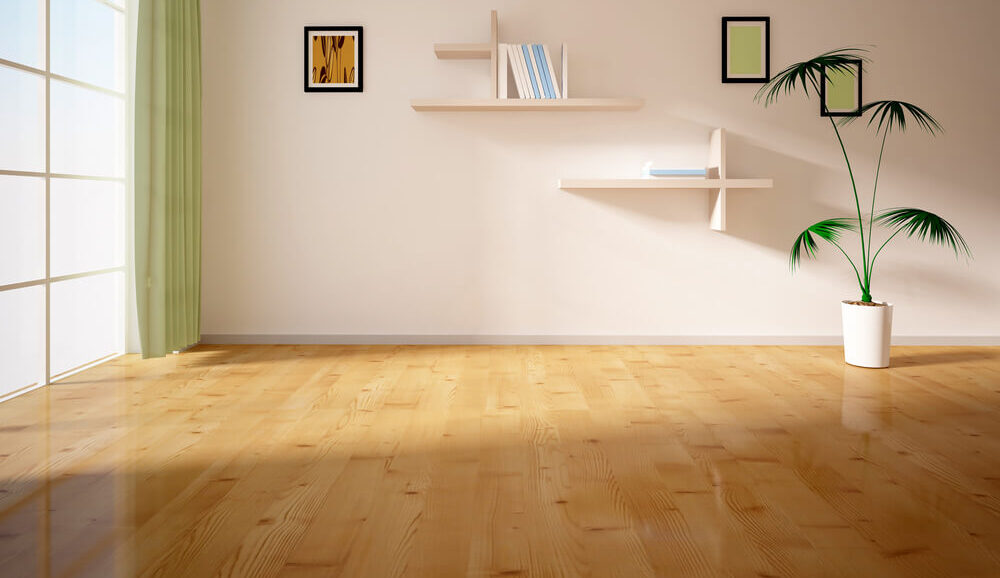
Hardwood floors are known for their timeless beauty, durability, and ability to add warmth to any living space. However, despite their many advantages, hardwood floors can be susceptible to some damage over time. Most of the homeowners ask, “Do hardwood floors fade in sunlight?”
Yes, hardwood floors can fade in sunlight due to UV radiation breaking down wood and finish bonds. Factors include wood type, finish quality, and exposure. Preventive measures, like using window treatments and high-quality finishes, help preserve the floor’s color and vibrancy. Regular maintenance is key to long-lasting hardwood floors.
Being hardwood flooring experts, we keep a strict eye on all the factors that cause damage to wooden flooring. In this article, we will explore the reasons behind hardwood floor fading, the types of wood most affected, and the preventive measures homeowners can take to maintain the luster of their hardwood floors. Before moving further let’s understand
Causes of Hardwood Floors Fading
Wood is a naturally photosensitive material, meaning it reacts to light. The sun’s rays, particularly UV light, break down the lignin in the wood, which is responsible for its color. Additionally, visible light and infrared light contribute to the fading process by causing the wood to oxidize. This oxidation process can also lead to the development of a gray or yellow cast on the surface of the wood.
Certain factors can accelerate the fading process:
UV Radiation
One of the primary factors contributing to hardwood floor fading is exposure to ultraviolet (UV) radiation from sunlight. UV rays have the ability to break down the chemical bonds in the wood and finish, leading to a gradual loss of color and vibrancy.
Wood Species Variation
Different wood species have varying levels of resistance to UV radiation. Some hardwoods, such as cherry and walnut, are more prone to fading, while others, like oak and maple, are more resistant. The natural color and grain pattern of the wood can also impact how noticeable fading becomes over time.
Finish Quality
The finish applied to hardwood floors plays a crucial role in protecting them from sunlight-induced fading. Low-quality finishes may lack the necessary UV inhibitors, making the wood more susceptible to discoloration. High-quality, UV-resistant finishes provide an additional layer of protection against fading.
Exposure Duration and Intensity
The duration and intensity of sunlight exposure also contribute to the rate of fading. Rooms with large windows or south-facing exposure tend to receive more sunlight, increasing the risk of hardwood floor fading over time.
Do Hardwood Floors Fade in Sunlight?
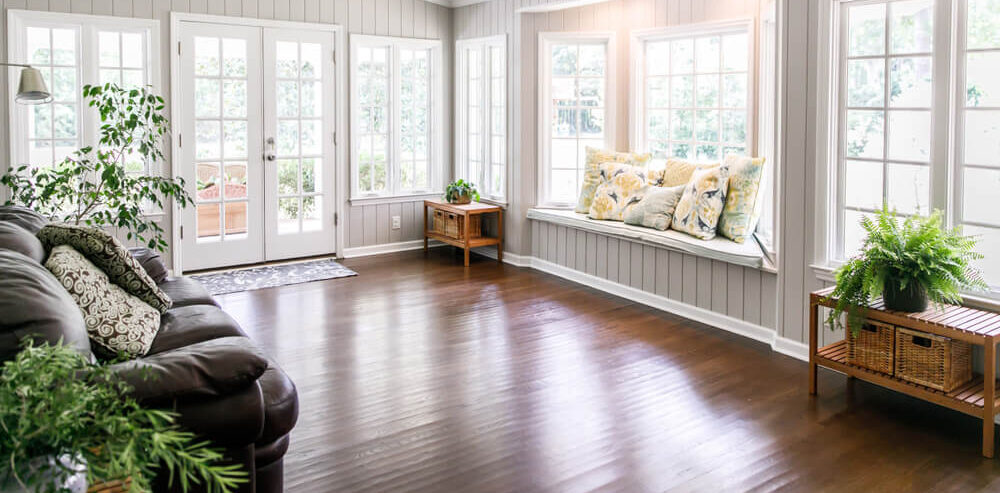
Yes, unfortunately, hardwood floors do fade in sunlight. While they are a beautiful and durable choice for flooring, they are not immune to the damaging effects of ultraviolet (UV) and visible light. Over time, sun exposure can cause hardwood floors to lose their vibrant color, become dull, and even develop patches of discoloration.
Signs That Hardwood Floors Are Fading
Here are some signs that your hardwood floors may be fading:
Loss of original color
The areas exposed to sunlight will appear lighter and washed-out compared to areas that receive less light.
Uneven color
The floor will develop patches of discoloration, with the most exposed areas being significantly lighter than shaded areas.
Dullness
The overall appearance of the wood will become dull and lifeless.
Gray or yellow cast
In some cases, the wood may develop a gray or yellow cast over time.
How To Restore Sun Faded Hardwood Floors?
Here’s a step-by-step guide on how to restore sun-faded hardwood floors:
Assess the damage
The first step is to assess the extent of the damage. Take a close look at the floor and identify the areas that are most affected by the sun. You may also want to consult a professional flooring contractor to get an expert opinion.
Gather materials
Once you know the extent of the damage, you can gather the necessary materials. You will need:
- Different grits of sandpaper will be needed for different stages of the process.
- Choose a stain that matches the original color of the wood, or a slightly darker shade if you want to deepen the color.
- A good quality sealer will protect the wood from further sun damage.
- Tack clothes to remove dust and debris from the floor before staining.
- Paintbrushes or rags to apply the stain and sealer.
- Wear gloves, goggles, and a dust mask to protect yourself from harmful fumes and dust.
Prepare the floor
- Remove all furniture and rugs from the room.
- Mop the floor to thoroughly clean it.
- Allow the floor to dry completely.
- Sand the floor with a sanding block or an orbital sander, starting with a coarse grit sandpaper and working your way up to a finer grit.
- Use a tack cloth to remove all dust from the floor.
Apply the stain
- Follow the instructions on the stain carefully.
- Apply the stain in thin, even coats, working your way from the edges of the room towards the center.
- Allow the stain to dry completely according to the manufacturer’s instructions.
Apply the sealer
- Follow the instructions on the sealer carefully.
- Apply the sealer in thin, even coats, working your way from the edges of the room towards the center.
- Allow the sealer to dry completely according to the manufacturer’s instructions.
Refinish the floor
Once the sealer is dry, you can apply a final coat of polyurethane or another type of finish.
Allow the finish to dry completely before replacing the furniture and rugs.
Maintain your floors
To help prevent further sun damage, use window coverings to block out direct sunlight.
- Vacuum your floors to properly clean it..
- Avoid using harsh chemicals or abrasive cleaners.
- Apply a fresh coat of sealer every few years.
By following these steps, you can restore your sun-faded hardwood floors to their original beauty and enjoy them for years to come.
Here are some additional tips for restoring sun-faded hardwood floors:
- If you are not comfortable doing the work yourself, you can hire a professional flooring contractor.
- There are a variety of commercially available products that can help to restore sun-faded hardwood floors.
- Be patient! Restoring sun-faded hardwood floors can be a time-consuming process.
With a little effort, you can restore the beauty of your sun-faded hardwood floors and make your home look its best.
How Keep Hardwood Floors From Fading? – Preventive Measures
Use Window Treatments
Employing window treatments such as blinds, curtains, or UV-filtering window films can help minimize the amount of direct sunlight reaching the hardwood floors. This simple step can significantly reduce the risk of fading.
Area Rugs and Furniture Placement
Placing area rugs and strategically positioning furniture can create shaded areas on the hardwood floor, providing protection from prolonged exposure to sunlight. Rotating rugs periodically can also help ensure even aging of the wood.
Quality Finishes
Investing in high-quality finishes with UV inhibitors is crucial for protecting hardwood floors. Regular maintenance, including reapplying finishes as needed, can extend the life of the protective layer and enhance resistance to fading.
Regular Cleaning
Dust and debris can act as abrasives, potentially speeding up the fading process. Regularly cleaning hardwood floors using appropriate methods and products can help preserve their appearance and reduce the impact of environmental factors.
FAQs
Why Is My Hardwood Floor Fading?
Hardwood floors fade due to exposure to UV radiation in sunlight, breaking down wood and finish bonds. Factors like wood type, finish quality, and sunlight intensity contribute to the fading process.
Do Hardwood Floors Get Lighter Or Darker Over Time?
Hardwood floors typically get lighter over time as exposure to sunlight can change the color of wood, resulting in a gradual loss of vibrancy.
What Flooring Does Not Fade In The Sun?
Porcelain or ceramic tile, vinyl, and laminate flooring are less prone to fading in sunlight compared to hardwood. These materials are more resistant to UV radiation and maintain their color over time.
Can Sun Faded Wood Be Restored?
Sun-faded wood can be restored to some extent through refinishing or re-staining. However, the degree of restoration depends on the severity of the fading, and professional assessment may be needed for optimal results.
How Do You Fix Sun Faded Hardwood Floors Without Sanding?
To fix sun-faded hardwood floors without sanding, consider applying a fresh coat of finish or stain. This process helps revitalize the wood’s appearance and adds a protective layer. It’s essential to thoroughly clean and prepare the surface before applying any new treatment.
Conclusion
While hardwood floors can add elegance and sophistication to any home, their exposure to sunlight poses a risk of fading over time. Homeowners can take proactive measures, such as using window treatments, strategically placing rugs and furniture, investing in quality finishes, and maintaining regular cleaning routines, to preserve the beauty of their hardwood floors. By understanding the causes of fading and implementing these preventive measures, homeowners can enjoy the timeless appeal of hardwood floors for many years to come.

